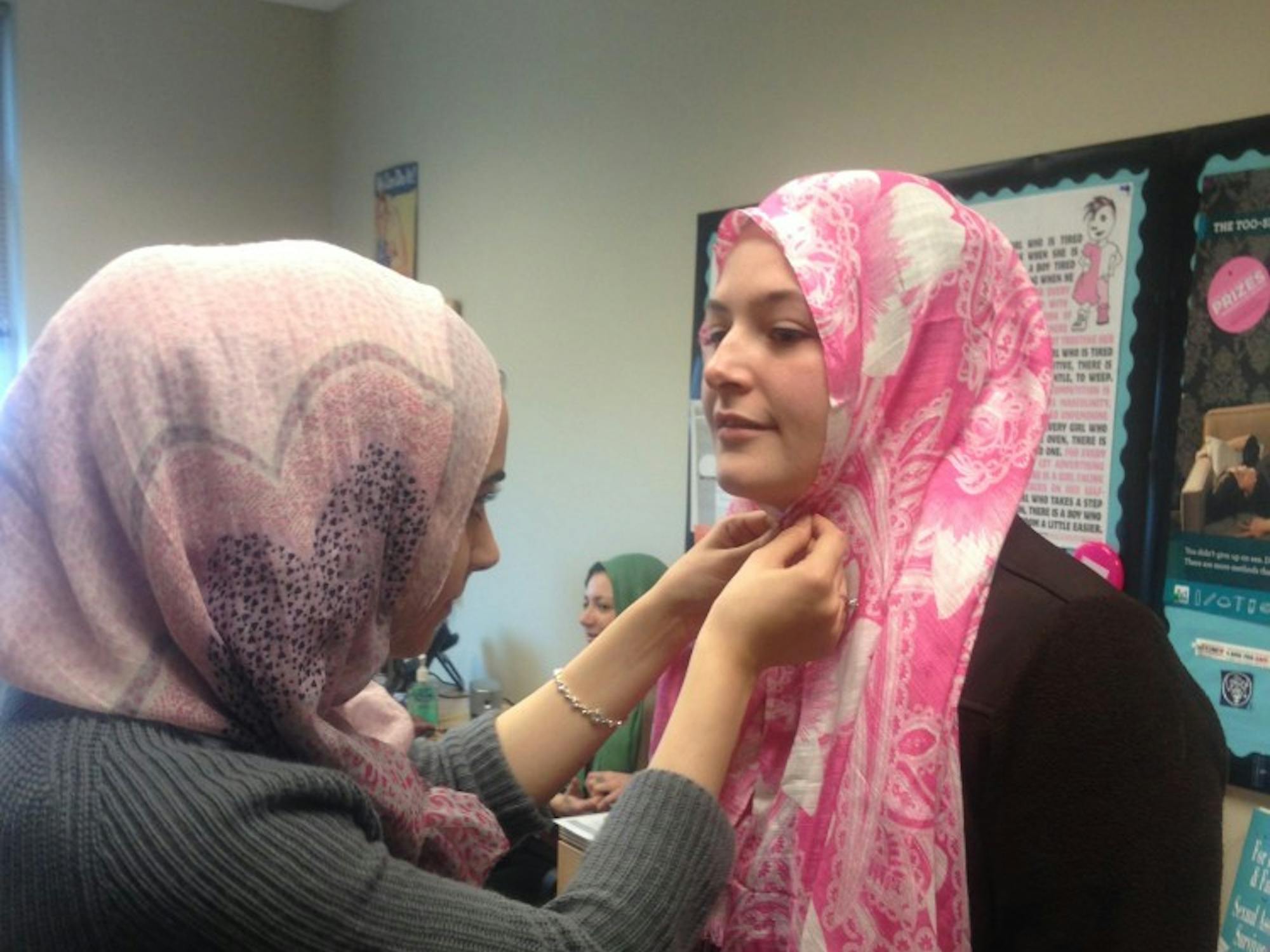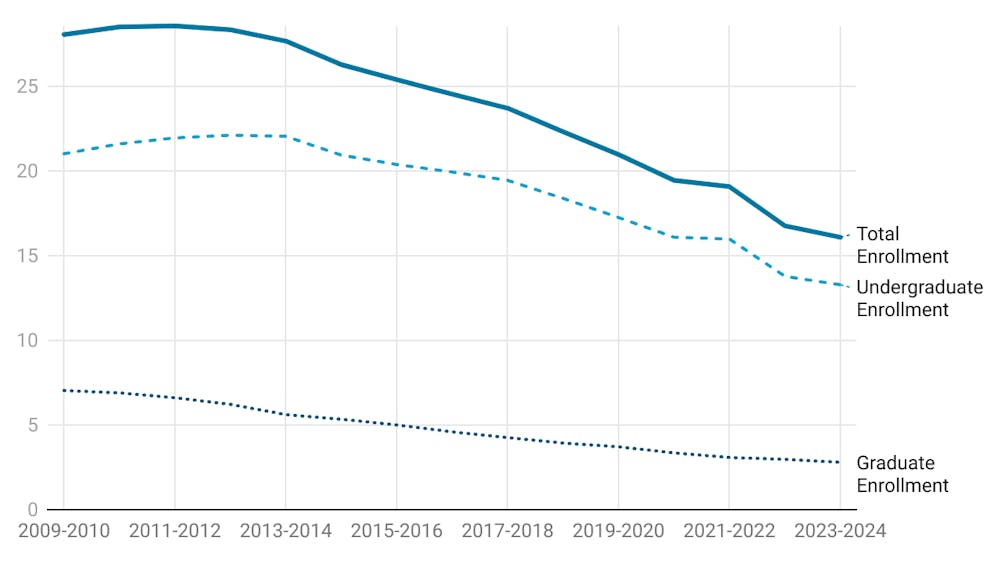Volunteers from the Muslim Student Association spent time in the Women’s Resource Center on Wednesday fitting hijabs, or headscarves worn by female Muslims, on women who wanted to participate in the university’s Hijab Day.
The volunteers were in the WRC from 10 a.m. to 3 p.m. The women coming through the center to try wearing a hijab for the day were of varying ages, and most of them were very excited about donning the headscarf.
About 70 headscarves were donated for Hijab Day, and all of them were spoken for by the end of the day.
One freshman student, Amal Farah, helped women put the scarves on properly. She started by asking participants if they knew anything about the hijab and what it stands for.
“It was pretty cool to meet people that wanted to try the hijab,” Farah said. “I was very happy to see other women than just Muslim girls. They seemed more concerned about how to wear the hijab than a typical hijabi does.”
The Hijab Day lecture started at 7:00 p.m. and dinner was served at 8:00 p.m. The speaker, Nadia Bazzy, spoke about her experience as a hijabi and what it means to wear the hijab to a mixed room of men and women – Muslim and non-Muslim.
Bazzy is a marriage and family therapist with a background in conflict transformation and peace building.
She talked about how the word hijab literarily means cover, or a screen. She explained that wearing the hijab is a practice seen as an obligation in Islam, regulated by the wearer. Hijab is both a physical and holistic concept that encompasses men and women alike.
“To experience something new and to better understand something is to engage in it,” Bazzy said about the women who wore the hijab for the first time.
Bazzy went on to talk about how the hijab has been politicized. Some countries place bans on the hijab in public places, while other countries force women to wear it in public.
According to Bazzy, hijab is politicized to control women by either oversexualizing women or controlling and hiding their sexuality.
She told the audience that her father didn’t want her to wear the hijab because he believed she would be discriminated against for wearing it. Bazzy went against her father and started wearing it at 16-years-old.
Bazzy said she was inspired by the Catholic tradition at her Catholic school and the Virgin Mary.
She wanted to be closer to God and more modest. She looked at the Virgin Mary and saw that it was her modesty that made her special.
“You don’t have to physically wear a scarf to be a hijabi,” Bazzy said. “You don’t even need to be
Muslim to have a modest personality. The idea of the hijab isn’t restricted to just Islam,”
To some people, the hijab is a political statement and to others, it is a freedom of expression. For Bazzy, it forced her to decide who she wanted to be. Her view of the hijab changed as she got older. Her reasons for wearing it now were to represent freedom and to represent women who are forced to do something.
“I was very impressed, happy and amazed by the turnout of the event,” MSA President Elaf Alchurbaji said. “I loved it when [Bazzy] said that the hijab is not just about the outward expression of modesty but more importantly, the inward expression of modesty through personality.”
After a question and answer session with Bazzy, the floor was opened up to the audience to share their experiences wearing the hijab for the first time.
“I was enlightened by the experience, and I liked doing it,” freshman Emily Chadwick said. “I liked to experience something from another culture.”
“There is a big Muslim population here,” sophomore Mariah Brito, said. She also said that she has always had a fascination with the hijab. “It wasn’t weird for people to see me wearing the hijab.
There were some not-so-close friends who looked at me awkwardly, but once they knew what day it was they understood why I was wearing it.”








